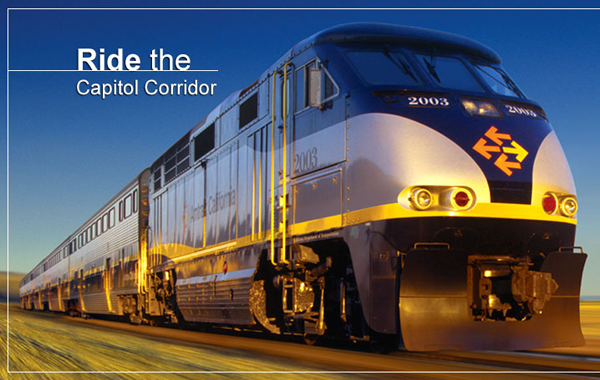Happening Now
The Capitol Corridor's Passenger Rail Boom
June 20, 2012
Written By Sean Jeans Gail

Reporter Susan Sward recently interviewed me for a Sacramento Bee piece profiling the dramatic change seen in the Capitol Corridor over the past thirty years—not only its booming ridership, but the cultural change its success has facilitated.
Sward's examines the role (former NARP board member) Eugene Skoropowski played in developing the San Francisco Bay Area to Sacramento rail corridor:
When the Capitol Corridor line began operating in 1991, it had six daily trains between Sacramento and San Jose and fewer than 240,000 riders a year. Its on-time record was typically below 90 percent – which system officials say was nothing to brag about.
From there, the system blossomed into the marvel of efficiency it is today.
One man deserving considerable credit for the corridor's growth is Gene Skoropowski, who headed the system from 1999 to 2009. Sean Jeans-Gail, vice president of the National Association of Railroad Passengers, recalls that Skoropowski looked at the state and saw what others didn't.
"In California, everyone assumed it would always be dominated by the car culture," Jeans-Gail said. "Skoropowski saw the potential for intercity travel and really pushed for it when he was at the helm. He understood that if you have frequent and reliable service – which is not the case over a large part of Amtrak's network – the passengers would come. He knew that California could be a model for other states."
Skoropowski, now senior vice president of the Florida East Coast Railway, says that he is "working to bring corridor service between Miami and Orlando." After putting in decades of work on train systems worldwide, he notes: "In my experience, Americans do love their cars, but what they hate is having to be in those cars in congested traffic on repetitive trips. The train can offer a real travel choice that most Americans are currently denied."
Sward also has a companion piece that looks at the state's high-speed rail line between San Francisco and Los Angeles. Both are well worth the read.
"Saving the Pennsylvanian (New York-Pittsburgh train) was a local effort but it was tremendously useful to have a national organization [NARP] to call upon for information and support. It was the combination of the local and national groups that made this happen."
Michael Alexander, NARP Council Member
April 6, 2013, at the Harrisburg PA membership meeting of NARP
Comments